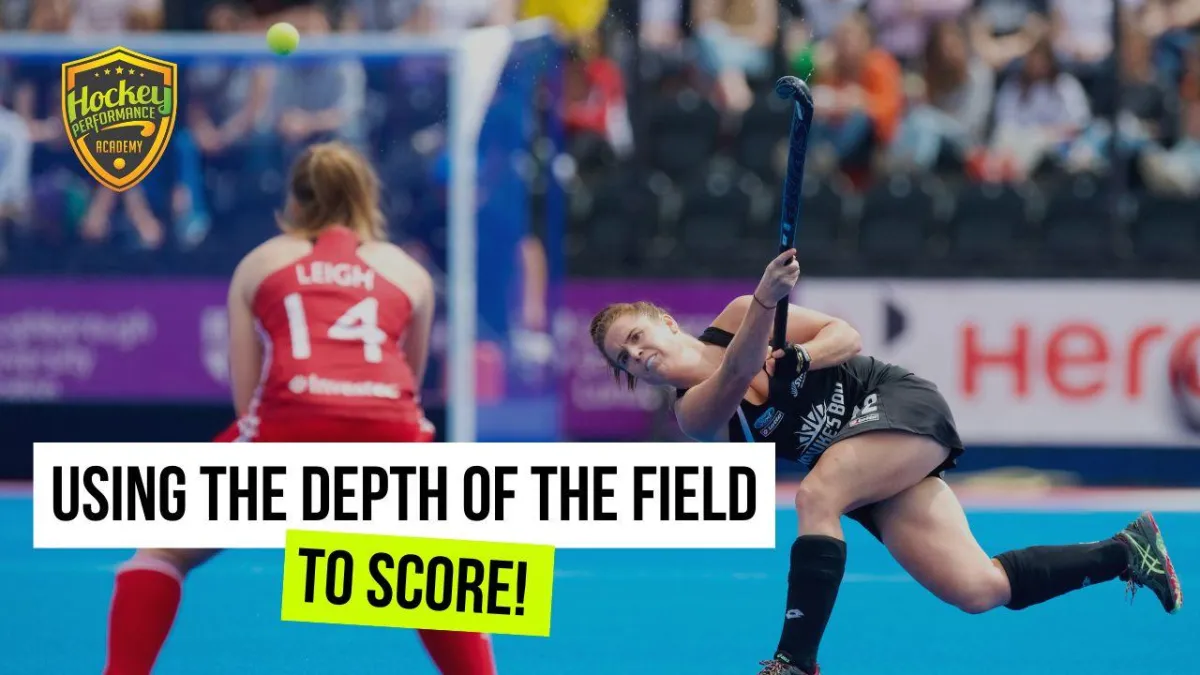
Using The Depth Of The Hockey Field (With An Overhead)
Do you ever feel like you don't have a lot of space in games and defenders are on top of you?
Consider whether you or your team are utilising the full depth of the field...
Let's look at an example of how to use the full depth of the field, helped with the use of an overhead.
Here is a summary of the key points:
1. Eyes Up
The player on the ball get's his eyes up to identify his options ahead. Once he see's the striker in the D, he get's nice and low to get underneath the ball and throw a 50 yard overhead (using great technique).
2. Great Depth From The Striker
Many strikers tend to lead back towards the ball, but in this example the striker shows how valuable it is to stretch the field and giving depth, which creates more space for us to work with. His positioning allows him to get ahead of the two defenders so that he can receive the ball in the D.
3. Use Backspace To Assess Options
A controlled receive into the backspace behind him allows the player time to have a look up and assess the options.
4. Use Body Position Creates Space
When there are no obvious options he uses his body and ball position to keep the defender on the inside, giving him space along the baseline.
5. Accelerate Into Space Along The Baseline
As soon as he identifies the space along the baseline, he uses a drag and accelerates ahead of the player to beat him.
6. Change Angle To Draw GK Out
He draws the goalkeeper out by changing the angle of his run and coming off the baseline.
7. Drag + Quick Release
A simple left to right drag is enough to change the line of the ball and a quick release push (while on his right foot) is enough to beat the goalkeeper past his left foot.
WANT TO REACH THE NEXT LEVEL IN YOUR HOCKEY?
I've put together a FREE 20 min training video sharing the 4 Steps To Get Noticed In Hockey, including how to avoid the same mistakes that I made (and that many others make too) when striving to reach a higher level in hockey.

Get the 4 Steps To Get Noticed FREE Training HERE
For more hockey tips and training DOWNLOAD OUR FREE mobile app using the buttons below



Using The Depth Of The Hockey Field (With An Overhead)
Do you ever feel like you don't have a lot of space in games and defenders are on top of you?
Consider whether you or your team are utilising the full depth of the field...
Let's look at an example of how to use the full depth of the field, helped with the use of an overhead.
Here is a summary of the key points:
1. Eyes Up
The player on the ball get's his eyes up to identify his options ahead. Once he see's the striker in the D, he get's nice and low to get underneath the ball and throw a 50 yard overhead (using great technique).
2. Great Depth From The Striker
Many strikers tend to lead back towards the ball, but in this example the striker shows how valuable it is to stretch the field and giving depth, which creates more space for us to work with. His positioning allows him to get ahead of the two defenders so that he can receive the ball in the D.
3. Use Backspace To Assess Options
A controlled receive into the backspace behind him allows the player time to have a look up and assess the options.
4. Use Body Position Creates Space
When there are no obvious options he uses his body and ball position to keep the defender on the inside, giving him space along the baseline.
5. Accelerate Into Space Along The Baseline
As soon as he identifies the space along the baseline, he uses a drag and accelerates ahead of the player to beat him.
6. Change Angle To Draw GK Out
He draws the goalkeeper out by changing the angle of his run and coming off the baseline.
7. Drag + Quick Release
A simple left to right drag is enough to change the line of the ball and a quick release push (while on his right foot) is enough to beat the goalkeeper past his left foot.
WANT TO REACH THE NEXT LEVEL IN YOUR HOCKEY?
I've put together a FREE 20 min training video sharing the 4 Steps To Get Noticed In Hockey, including how to avoid the same mistakes that I made (and that many others make too) when striving to reach a higher level in hockey.

Get the 4 Steps To Get Noticed FREE Training HERE
For more hockey tips and training DOWNLOAD OUR FREE mobile app using the buttons below



